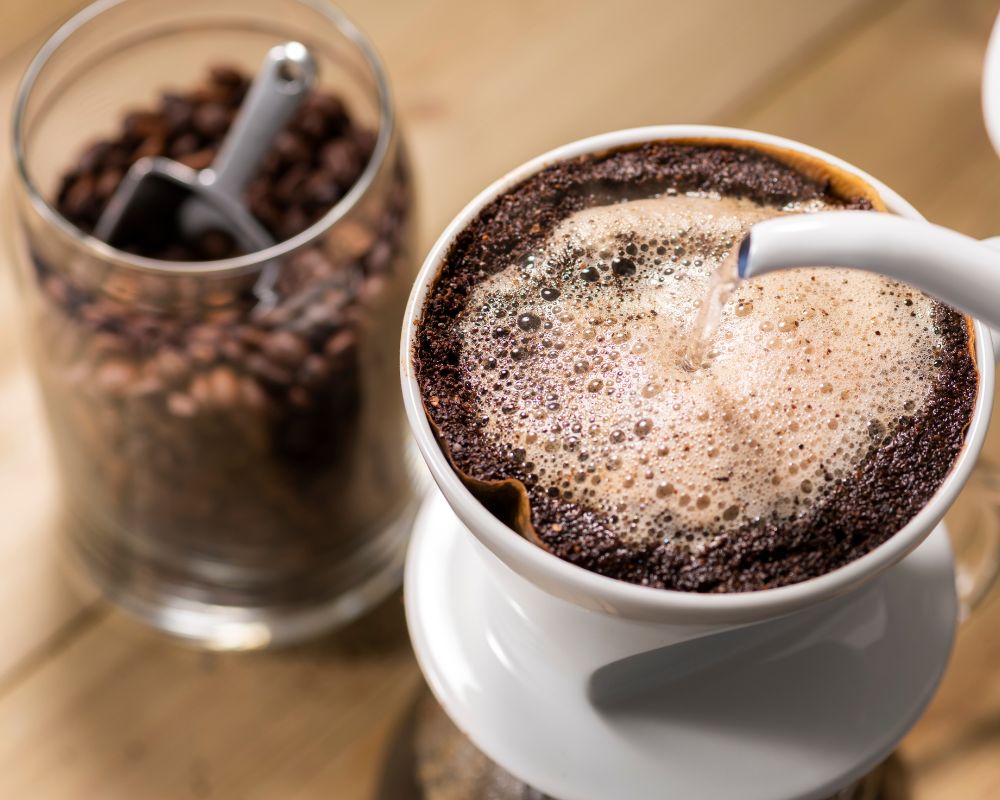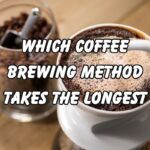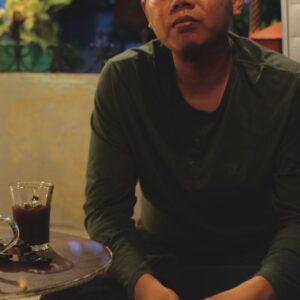Which coffee brewing method takes the longest. The journey to a perfect cup of coffee can be as rewarding as the destination. The slowest coffee brewing method is often the most revered for those pursuing depth and complexity. Such techniques prioritize patience, allowing nuances to flourish through slow extraction coffee techniques. But what sets these methods apart? This intricate dance of time and taste separates the swift from the longest coffee brewing techniques, and it’s this elongated immersion that promises to unfurl flavors otherwise hidden in the hustle of our daily grind. Prepare to steep yourself in tradition and taste as we explore the realms where time stands still for the sake of exceptional coffee.
Exploring the Art of Slow Coffee Brewing

In your journey to unveil the essence of a truly remarkable brew, you may find yourself enamored with the precision and patience that slow coffee brewing techniques demand. This pursuit of liquid excellence is a dance of time and temperature, a meticulous ritual that connoisseurs and enthusiasts savor. Deeply rooted in tradition, the methods requiring extended brewing time stand in stark contrast to the hustle of today’s instant gratification culture.
By adopting practices such as the French Press, Cold Brew, or the intricate pour-over, you engage in an art form that is as ancient as it is therapeutic. Each method has its unique cadence and character, with the extended brewing time methods holding a special place for those who revere the nuanced flavors that emerge from a carefully curated process. The question of which coffee brewing method takes the longest is more than curiosity; it’s a testament to the devotion invested in each cup.
- Pour-Over Techniques: Manual, gravity-driven, fostering a gentle extraction of oils and aromas.
- French Press: Full immersion, leveraging time to coax robust, bold flavors from the grounds.
- Cold Brew: Steeped for hours, sometimes days, yielding a smooth, mellow, and rich profile.
Let’s consider the meditative process of the pour-over, a favorite among purists. Unlike an automatic drip coffee machine, the pour-over method requires a steady hand and an attentive eye to guide the water over the grounds in a ritualistic spiral. It’s a dance of elements, drawing out flavors that machines cannot replicate. It’s an acknowledgment that perfection cannot be rushed.
When you ponder over the time-intensive nature of these brewing methods, remember that the value lies in the flavor and the experience. The act of brewing becomes a statement of intent, a deliberate choice to slow down and savor the moments that accumulate into hours, into a life well-lived. In this table, observe how the methods vary in not just taste but in the sacred minutes and hours they command:
| Brewing Method | Typical Brewing Time | Characteristic Flavors |
|---|---|---|
| Pour-Over | 3-5 minutes | Balanced, nuanced |
| French Press | 4-5 minutes | Full-bodied, rich |
| Siphon | 5-10 minutes | Complex, clean |
| Cold Brew | 12-24 hours | Smooth, sweet |
As the table illustrates, there’s a notable spectrum, with cold brew at the end of the scale regarding the time invested. It’s a testament to the reverence that a slow brew garners—a commitment to flavor that only the most patient and passionate can genuinely appreciate.
Understanding the Importance of Brew Time in Coffee Making
Often overlooked in the quest for the perfect cup, the total brew time is pivotal in shaping the sensory profile of your coffee. Diving into brewing methods with extended brewing time reveals a dimension where precision and patience intersect to craft a beverage that resonates with depth and complexity. As you explore which coffee brewing method takes the longest, it’s essential to consider the scientific and sensory implications of the duration your coffee and water interact.
Extended contact time during brewing allows for richer extraction of flavors but also requires a balance to avoid over-extraction, which can lead to bitterness. Conversely, a brew time that is too short may result in a cup that is sour and underwhelming. The controlled extension of brew time is at the heart of time-consuming coffee brewing methods, and it’s this control that enables you to savor the full spectrum of coffee’s flavor notes, from sweet and fruity to rich and nutty.
Various factors contribute to the length of brew time, including water temperature, which should be optimized to enhance the extraction process without compromising the delicate flavors of the coffee. Similarly, grind size plays a crucial role since finer grounds may increase resistance to water flow, thereby increasing brew time and intensifying extraction.
| Brewing Method | Average Brew Time | Water Temperature | Grind Size | Notes on Extraction |
|---|---|---|---|---|
| Cold Brew | 12-24 hours | Room temperature | Coarse | Slow extraction ideal for smooth, mellow flavor with low acidity |
| French Press | 4-5 minutes | 195°F – 205°F | Coarse | Allows for full extraction and offers bold, rich flavors |
| Pour Over | 3-4 minutes | 195°F – 205°F | Medium to fine | Controlled brew for a cleaner cup and highlighting nuanced flavors |
Real-world testing and sensory analysis by experts in the field align with consumer preferences regarding the correlation between brew time and taste. For instance, the celebrated pour-over methods, renowned for their deliberate pace and precision, confirm that a mindful brewing approach can unearth flavor layers that are otherwise lost in expedited methods. Similarly, the acknowledged leader in both patience and flavor payoff is the cold brew technique, which triumphs as the coffee brewing method with the longest duration, rewarding the brewer with a remarkably smooth and concentrated elixir.
Which Coffee Brewing Method Takes the Longest?

In your quest for the perfect cup of joe, you might wonder about the longest coffee brewing process. The methods that require the most patience often reward you with the richest flavors. As we delve into this exploration, we’ll uncover the slowest coffee extraction methods and the nuances that come with each. Let’s embark on a journey to discover those time-honored techniques.
Searching for the Slowest Coffee Brewing Method
The pursuit of the most leisurely brewing method leads us to an array of techniques. Each method has its own pace, from the traditional drip to the manual pour-over. However, some stand out for their extended brewing time methods, promising an unparalleled depth in every sip. Within these techniques, it’s important to note that a longer brew time doesn’t always signify a better taste but rather a different profile tailored to specific preferences.
Comparing Time-Consuming Coffee Brewing Techniques
Let’s examine and compare several brewing techniques known for their lingering clock. Each method brings a certain complexity to the brew that can’t be rushed. The table below offers a comparative glance at the estimated brewing times and characteristics for a few selected methods, helping you to understand the investment of time versus the taste payoff.
| Brewing Method | Preparation Time | Brewing Time | Total Time | Taste Notes |
|---|---|---|---|---|
| Cold Brew | 15 min | 12-24 hours | 12-24 hours, 15 min | Smooth, sweet, less acidic |
| French Press | 5 min | 4 min | 9 min | Full-bodied, rich |
| Siphon Coffee | 10 min | 5-10 min | 15-20 min | Clean, crisp, complex |
| Aeropress (Extended Brew) | 2 min | 3-5 min | 5-7 min | Balanced, versatile |
| Japanese Iced Coffee Drip | 5 min | 3-5 hours | 3-5 hours, 5 min | Bright, flavorful, aromatic |
As depicted, cold brewing takes the crown for the longest coffee brewing process, but it’s vital to consider that the lengthy time promised yields a uniquely mellow and sweet taste profile. With this knowledge, you’re better equipped to choose a brewing method that aligns with your time constraints and taste preferences—whether for a swift morning fix or a leisurely weekend ritual.
The Impact of Extended Brewing Time on Coffee Flavor
When you delve into the world of coffee, you’ll quickly find that the slowest coffee brewing method is more than a test of patience—it is a pivotal factor defining the essence of your cup. The slow extraction coffee techniques used in these methods symbolize an artisan approach and significantly alter the coffee’s sensory profile. As such, extended brewing time is central to the alchemy that coaxes out deeper flavors and varied textures.
Let’s explore how longest coffee brewing techniques interact with the coffee grounds to enhance various flavor dimensions:
- Taste: Prolonged contact with water facilitates a more comprehensive extraction, allowing subtle notes and hidden flavors to emerge, leading to a complex and nuanced taste profile.
- Acidity: The interplay between brew time and acidity can yield a mellower cup, as extended brewing often subdues sharp, acidic notes, producing a smoother finish.
- Body: A thicker, fuller body is a distinct signature of coffees brewed slowly. This result is due to longer immersion times, which allow more oils and soluble compounds to dissolve into the brew.
- Aroma: The aromatic compounds in coffee have time to evolve and develop during slow brewing. This can create a multi-layered olfactory experience that precedes the tasting process.
Experts concur that the components within coffee beans—sugars, acids, and lipids—undergo a more thorough extraction process under extended brew times. Consequently, this can transform the coffee experience, rendering a beverage with far greater depth than what quick brewing methods can offer.
In essence, slow brewing turns coffee into a culinary craft, with the timing aspect playing a central role in the emergence of a brew that will capture both your palate and your heart. As you journey through various coffee brewing methods, remember that time is not just a quantity—it’s an architect of flavor.
Diving into Slow Extraction Coffee Techniques
When crafting the perfect cup of coffee, time is of the essence. Slow-extraction coffee techniques allow connoisseurs to savor every nuance of their favorite beans. These methods, famed for their extended brewing time, emphasize patience and precision to unlock the fullest potential of coffee aromas and flavors.
The Chemistry Behind Prolonged Coffee Extraction
Chemistry plays a pivotal role when you engage in slow-extraction coffee techniques. As water interacts with coffee grounds during the extended brewing time, it gradually dissolves the solubles that give the beverage its distinctive taste and aroma. The slow dance of water and coffee extracts the desirable flavors and limits the extraction of bitter and astringent compounds typically associated with over-extraction. This systematic approach yields a balance in your cup that is both complex and harmonious.
Key Variables in Slow Brew Coffee Methods
Mastering the slowest coffee extraction methods demands attention to several critical variables:
- Water Quality: Pure, filtered water without heavy minerals can significantly enhance your coffee’s flavor during slow extraction.
- Water Temperature: Lower-than-boiling temperatures are preferred for slow brewing methods, as they facilitate a more gradual extraction process.
- Coffee-to-Water Ratio: The right balance between coffee and water is crucial. Too much water can lead to under-extraction, while too little can over-extract the coffee and introduce bitterness.
Here is a comparison of brewing methods with extended brewing times, showcasing the minimum and maximum brewing periods:
| Method | Minimum Brew Time | Maximum Brew Time | Notes |
|---|---|---|---|
| Cold Brew | 12 hours | 24 hours | Room temperature extraction for a smoother, less acidic cup |
| French Press | 4 minutes | 10 minutes | Longer steep time increases body and flavor complexity |
| Pour Over | 3 minutes | 5 minutes | Controlled pouring enhances extraction uniformity |
| Aeropress (Inverted Method) | 1 minute | 3 minutes | Extending brew time brings out deeper flavors |
Taking time with these slow brewing methods invites a richer, more multidimensional coffee experience. Patience goes a long way in perfecting your brew, so why not indulge in slow coffee extraction?
Comparing Traditional Coffee Brewing Techniques

When you immerse yourself in traditional coffee brewing techniques, you’re not just making coffee; you’re taking part in a ritual that spans cultures and centuries. Each method is about the beans or the water and the story of its origin. As we compare these methods, one finds that the slowest coffee brewing method can often be found among these time-honored traditions.
Let’s travel across the globe through the lens of coffee and discover how coffee brewing techniques serve as a window into the cultural values and historical contexts from which they’ve emerged. Here’s a brief comparison of some of the world’s most cherished coffee rituals:
- Turkish Coffee – Known for its strong brew and fine grounds, it is prepared in a cezve and symbolizes hospitality and friendship. It has one of the longest brewing times, as the coffee is brought to a boil, cooled, and then boiled again multiple times.
- French Press – A device beloved for its simplicity and the rich, full-bodied coffee it produces. It involves steeping coarse grounds for several minutes, allowing for a thorough flavor extraction.
- Italian Espresso – While not slow in its brew time, traditional Italian espresso is a meticulous process of precise extraction, yielding a bold and concentrated shot that has shaped espresso culture worldwide.
- Siphon Coffee – With its roots in early European and American coffee houses, this technique offers a theatrical presentation. Using vapor pressure and vacuum, the siphon can have a lengthy brew process, ensuring a clean and unique cup of coffee.
- Indian Filter Coffee – Involves brewing finely ground coffee in a metal dripper called a ‘filter.’ The coffee drips slowly into a cup, creating a strong concentrate called ‘decoction,’ subsequently mixed with hot milk.
Cultural significance is the fabric of these brewing methods; for instance, in Turkey, the coffee is often brewed with sugar and sometimes spices, reflecting local culinary tastes. French Press coffee, associated with leisurely mornings, often allows a pause in the day for one to savor the flavors extracted during the brewing process. With Indian filtered coffee, layering coffee and milk is a symbolic start to many South Indians’ day, a practice deeply interwoven with daily life.
A Step-by-Step Guide to the Longest Coffee Brewing Process
When preparing a cup that stands out in flavor and complexity, the longest coffee brewing process often yields the most gratifying results. Here, we provide a comprehensive breakdown of how to prepare your coffee using extended brewing time methods meticulously.
Selecting the Right Beans for Extended Brew Techniques
Choosing the right coffee beans is crucial to the overall taste of your slow brew. For an extensive extraction process, beans with a full body and complex flavor profile, such as those from Ethiopia or Colombia, are ideal. Consider single-origin beans to take advantage of their unique characteristics that become more pronounced with prolonged brewing.
Fine-Tuning Your Grind for Slow Brewing
The grind size of your coffee significantly impacts the extraction rate. A coarse grind is recommended for longer brews, as it slows down the process, allowing more subtle flavors to emerge. Adjust your grinder to a one-notch coarser setting than what you would use for a regular drip-brew.
| Bean Origin | Flavor Notes | Recommended Grind | Ideal Brewing Time |
|---|---|---|---|
| Ethiopia | Berry, Wine-like | Coarse | 24 Hours (Cold Brew) |
| Colombia | Nutty, Chocolate | Coarse | 4-6 Minutes (French Press) |
| Sumatra | Earthy, Spicy | Coarse | 12 Hours (Cold Brew) |
| Guatemala | Floral, Citrus | Coarse | 5 Minutes (Pour Over) |
Follow these guidelines meticulously to immerse yourself fully in coffee brewing techniques. With patience and precision, the extended brewing time methods will guide you to a rewarding cup worth the wait.
Why Choose Brewing Methods with Extended Brewing Time?
When you immerse yourself in the world of coffee, you’ll soon discover that extended brewing time methods offer an unparalleled depth of flavor and complexity. It’s a journey into the slowest coffee brewing method that promises a reward worth the wait. Savoring coffee is more than a daily routine; it is an experience to be cherished, significantly enhanced by slow coffee brewing techniques. Here, we delve into the compelling reasons that make these methods a choice for those who cherish quality over convenience.
The very ethos of slow coffee brewing is about engaging deeply with the process, allowing the hot water to coax out the flavors and oils from the coffee grounds gradually. Advocates of coffee brewing techniques that emphasize an extended brewing time often speak of a meditative aspect to this careful preparation. It’s not merely about drinking coffee; it’s about participating in an age-old ritual that enhances the sensory experience.
Consumer testimonials frequently echo this sentiment. Seasoned coffee fans attest to the superior flavor profiles attained through the meticulous precision of French press, cold brew, and manual pour-over—techniques synonymous with prolonged contact between coffee and water.
- Cold Brew: With brewing time spanning over hours to even a day, it allows for the extraction of rich, smooth flavors without the bitterness often associated with other methods.
- French Press: A fan-favorite for its robust taste and silky mouthfeel, the French press method demands patience but rewards you with an intensely flavorful cup.
- Pour-Over: This manual method affords meticulous control over brewing variables and yields a clean, nuanced cup reflective of the coffee’s origin.
As slow coffee culture gains momentum, the emphasis on quality results over speed continues to captivate coffee lovers. In a fast-paced world, opting for extended brewing time methods is a deliberate choice to slow down and savor the moment. For those who value craftsmanship in their cup, the slowest coffee brewing method is not just a method; it’s an homage to the time-honored tradition of coffee making.
Advanced Techniques for Expert Coffee Aficionados
As a coffee lover, you’re likely always seeking methods to elevate your brewing game. Advanced coffee brewing techniques refine your palate and enhance your appreciation for the subtle intricacies of your favorite beans. Understanding and mastering the slow extraction coffee techniques are paramount in achieving a brew that is both complex in flavor and satisfyingly unique.
Mastering the Balance of Temperature and Time
One of the keystones of advanced brewing is the meticulous balance of temperature and time. This precise calibration can change a coffee from good to exceptional. It’s important to acknowledge that each coffee variety responds differently to heat, influencing the oil and flavor extraction rate. Controlling the temperature and timing of your brew can accentuate specific notes and achieve a flavor profile tailored to your palate.
Exploring Rare Coffee Varieties for Slow Brewing
For those adventurers yearning to experiment beyond the conventional, rare coffee varieties can offer an extraordinary experience when combined with slow extraction techniques. These unique beans often come with their own set of brewing recommendations that, when followed, unveil a spectrum of flavors that are not encountered in everyday coffee blends. Utilizing these beans within the arena of slow brewing allows for a full exploration of the coffee’s potential.
| Coffee Variety | Origin | Flavor Notes | Recommended Brewing Technique | Optimal Extraction Time |
|---|---|---|---|---|
| Gesha | Panama | Floral, Citrus, Jasmine | Pour-Over | 3-4 Minutes |
| Yemeni Mocca | Yemen | Chocolate, Dried Fruit, Wine | French Press | 4-5 Minutes |
| Sulawesi Toraja | Indonesia | Earthy, Pineapple, Caramel | Cold Brew | 12-24 Hours |
By infusing your passion and knowledge with these advanced techniques, you will deepen your understanding of what makes an exceptional cup of coffee and enhance your reputation as a true coffee lover. The journey of exploring these multifaceted layers of coffee brewing is as rewarding as the delicious result in your cup.
Tools and Equipment Necessary for Slow Coffee Brewing
Embarking on the journey of slow coffee brewing requires patience, skill, and the right coffee brewing equipment. The quest for the slowest coffee brewing method brings you to a space where every second counts and precision is non-negotiable. As you delve into slow extraction coffee techniques, we outline the essential tools to help craft your perfect cup.
Grinders are pivotal in achieving the texture and size of coffee grounds necessary for optimal flavor extraction. Whether you’re using a burr or a hand mill, a consistent grind is key. Alongside grinders, scales ensure accurate measurements for coffee and water ratios, which is crucial for reproducible results in slow brew methods.
| Equipment Type | Use Case | Recommended Brand | Notes |
|---|---|---|---|
| Gooseneck Kettle | Precision pouring | Hario | Allows a consistent and controlled pour, vital for methods like pour-over. |
| Burr Grinder | Even grinding | Baratza | Ensures uniform coffee grounds, important for even extraction. |
| Digital Scale | Exact measurements | Acaia | Needed for precise coffee-to-water ratios. |
| French Press | Immersion brewing | Bodum | Quintessential equipment for a full-bodied brew. |
| Cold Brew Tower | Cold extraction | Yama Glass | For an intricate setup that facilitates cold drip methods. |
| Aeropress | Pressure-based brewing | AeroPress, Inc. | Versatile and portable for different extraction times. |
Temperature control, as afforded by a good quality thermometer, is indispensable when tinkering with extraction times. In addition, timers are critical – forgetting time during a slow extraction can result in over-extraction or under-extraction, leading to a subpar cup. Filters, both paper and metal, also affect brewing times and the ultimate taste profile.
Exploring these coffee brewing equipment options is more than just acquiring gadgets; it’s about honing your craft. Whether you’re looking to perfect your pour-over technique or experimenting with cold brews, each piece of equipment contributes to a meticulously calculated, sensory-rich coffee experience.
The Rise of Slow Coffee Culture in the United States
The tapestry of American coffee culture is rich and diverse. Still, amidst the quick fixes of espresso shots and paper-cup convenience, slow coffee culture is making an indelible mark on the nation’s caffeine habits. In the United States, many coffee lovers are embracing coffee brewing techniques that spotlight coffee’s meticulous and leisurely preparation.
Signed by a common desire for a more thoughtful and nuanced coffee experience, enthusiasts of slow coffee culture savor the ceremonial aspects of brewing. From pour-overs to French Press and siphon brewers to cold brew methods, these United States coffee trends signify a shift towards mindfulness in consumption.
“There’s a shared understanding among our patrons that good things take time,” remarks a barista from a famous New York coffee house known for its slow-brewed specialties. “People here don’t just want a drink; they’re looking for an experience, something they can cherish and enjoy.”
Esteemed coffee shops across the country, now anchors of slow coffee culture, report a consistent uptick in demand for classes on refining coffee brewing techniques. This educational approach strengthens the community bond and highlights the growing appreciation for subtler flavor profiles achieved through extended brew times.Industry growth figures align with the emergence of this trend. Data shows a consistent rise in slow brewing equipment and accessories sales. As slow coffee culture gains traction, it also paves the way for a deeper understanding and appreciation of the bean-to-cup journey, which many consumers are willing to invest time and resources into.


